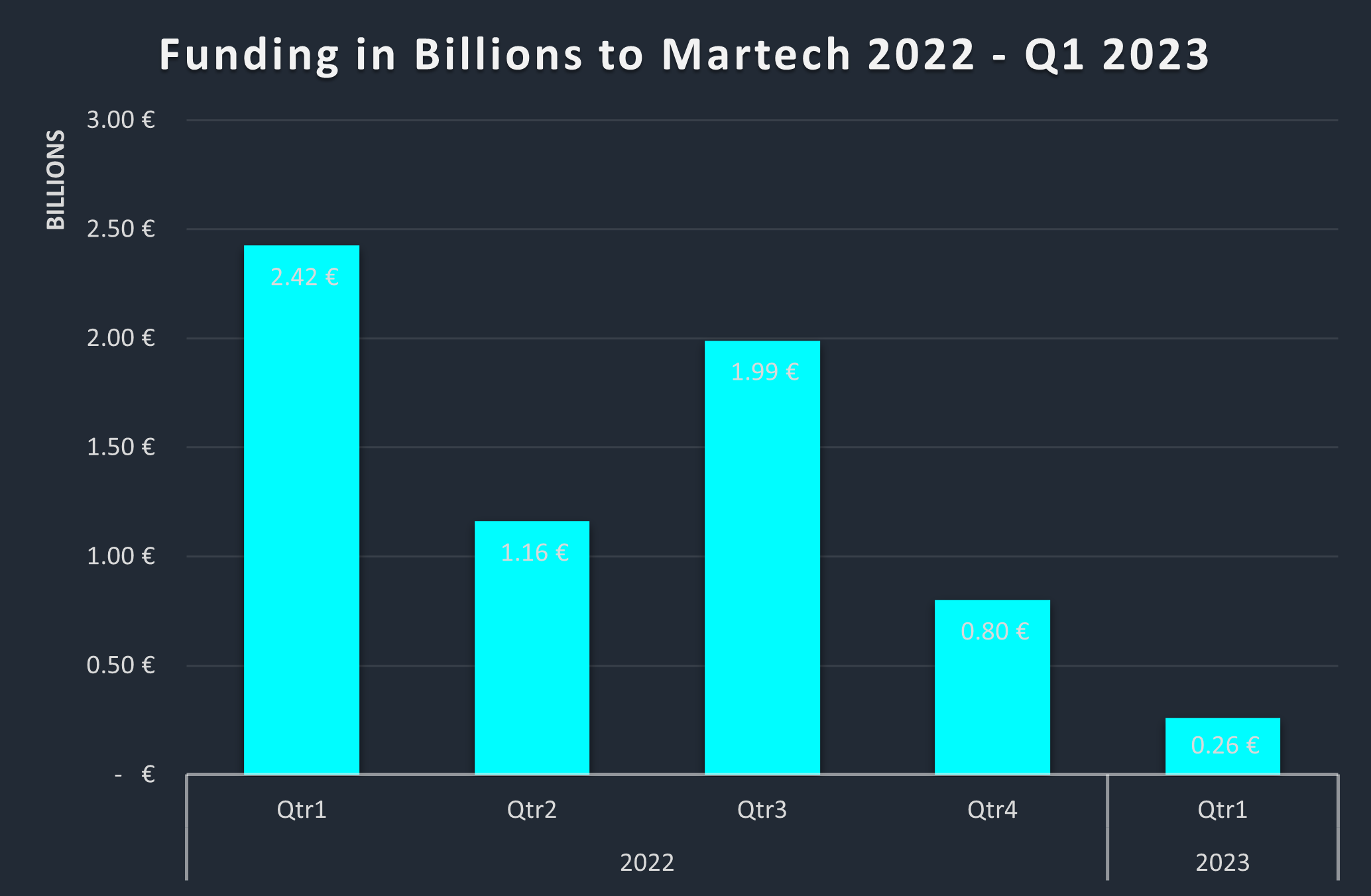Introduction
Martech companies face unique challenges in today's dynamic business landscape. With increasing pressure to cut technology spending, coupled with the ever-present risk of customer churn, they must navigate a delicate balance to sustain growth and profitability. In this blog post, we will delve into the critical issue of customer churn and provide five essential strategies that Martech companies can employ to avoid it.
Customer churn, the loss of customers over a specific period, poses a significant threat to the success and sustainability of Martech companies. It results in lost revenue, reduced market share, and diminished customer loyalty.
Moreover, Martech companies operate in an environment where 75% of CMOs feel compelled to reduce technology spending, further intensifying the need to combat customer churn effectively.
Understanding the impact of customer churn and implementing proactive measures to retain customers is paramount for Martech companies.
By adopting strategies tailored to their unique challenges, they can mitigate churn, drive growth, and solidify their position in the market. Let's explore the five key strategies that will empower Martech companies to tackle the daunting issue of customer churn head-on.
Understanding Martech
Martech, short for marketing technology, encompasses the tools and platforms that enable marketers to automate, analyse, and optimize their marketing efforts. However, despite its potential, martech spending has seen a decline recently.
Many marketers are under pressure to cut back on their technology investments, limiting their ability to leverage the full potential of martech solutions.
This reduction in Martech spending directly affects martech companies, as it impacts their revenue streams and growth prospects. Customer churn further exacerbates the challenges faced by martech companies, making it crucial to address and mitigate this issue effectively.
The Role of Customer Churn in Martech
Customer churn poses several challenges for martech companies. Firstly, a high churn rate directly affects the number of active users or customers a company has. This, in turn, impacts the amount a company can spend on its own marketing efforts, hindering its ability to acquire new customers and expand its market presence.
Secondly, customer churn has implications for fundraising. Investors are less likely to provide funding to martech companies that are experiencing high customer churn rates. After all, why would they invest in a company that is losing its existing customer base? Predicting and mitigating customer churn is crucial for martech companies looking to secure funding and demonstrate their growth potential.
However, predicting customer churn is not without its challenges. It requires a deep understanding of customer behaviour, the ability to analyse vast amounts of data, and the implementation of effective customer retention strategies. Martech companies must invest in advanced analytics and machine learning capabilities to gain insights into customer churn patterns and develop proactive measures to address it.
What's Happening with Equity/Debt Fundraising in Martech
The world of martech fundraising has seen fluctuations in recent times. Crunchbase data from January onwards provides insights into martech fundraising numbers. Understanding these trends is essential for martech companies seeking external funding.
Here are some statistics from Crunchbase on Martech Funding this past year.

And if funding says anything about the health of a vertical, then Martech is really struggling. Funding opportunities have dried up in Q1 2023. From the perspective of one year ago, Q1 2022, where funding rounds toppled €2.42b, Q1 2023 had funding rounding up at a measly €260m. That’s a steep decline, 89% to be exact.
We can dive a little more into the varieties of deals, too, and get a clearer picture of what’s really happening when we look under the hood.
When we analyse funding trends, but by quantities and types of rounds, what’s specifically remarkable is the decrease in higher funding rounds: C, D, or post-IPO.
Factors such as market conditions, investor sentiment, and the company's growth trajectory play a significant role in martech fundraising. It is crucial for them to showcase their ability to address customer churn effectively and demonstrate their resilience in the face of market challenges.
The Big 5 Things to Nail to Minimise Churn
To avoid customer churn and build resilience, martech companies should focus on the following key strategies:
1. Stickiness:
Developing a product that is deeply embedded within a customer's operations makes it challenging for them to switch to a competitor. Building strong integrations, seamless workflows, and providing exceptional customer support can create a pain point for customers trying to switch, effectively reducing churn.
2. Keep Up with Innovation:
In the fast-paced martech industry, customers are always looking for the best and newest solutions. Companies must invest in research and development to stay at the forefront of innovation. By continuously improving their products and offering cutting-edge features, martech companies can retain customers and attract new ones.
3. Customer Success Programs:
Implementing robust customer success programs can significantly impact customer retention. By proactively engaging with customers, addressing their pain points, and providing personalized support, martech companies can build strong relationships and reduce churn.
Don’t get too invasive on customers either. Instead, leverage the power of Catalytic Marketing, Which Allows CMOs to Drive Profitable Growth Amid Macroeconomic Pressures.
4. Data-Driven Insights
Leveraging data and analytics is crucial for understanding customer behaviour and predicting churn. By employing advanced analytics techniques, martech companies can identify early warning signs and take proactive measures to retain at-risk customers.
5. Continuous Improvement:
Martech companies should foster a culture of continuous improvement. By actively seeking customer feedback, incorporating it into product development, and iterating based on market needs, companies can enhance customer satisfaction and loyalty.
Conclusion
Customer churn poses a significant challenge for martech companies, impacting their growth, revenue, and investor appeal. By understanding the complexities of martech, investing in customer retention strategies, and staying ahead of market trends, companies can mitigate churn and build resilience.
Adopting a customer-centric approach, embracing innovation, and leveraging data-driven insights are crucial for martech companies to thrive in a highly competitive landscape.
Addressing customer churn is not only an opportunity for growth but also a necessity for long-term success in the martech industry.

.png)